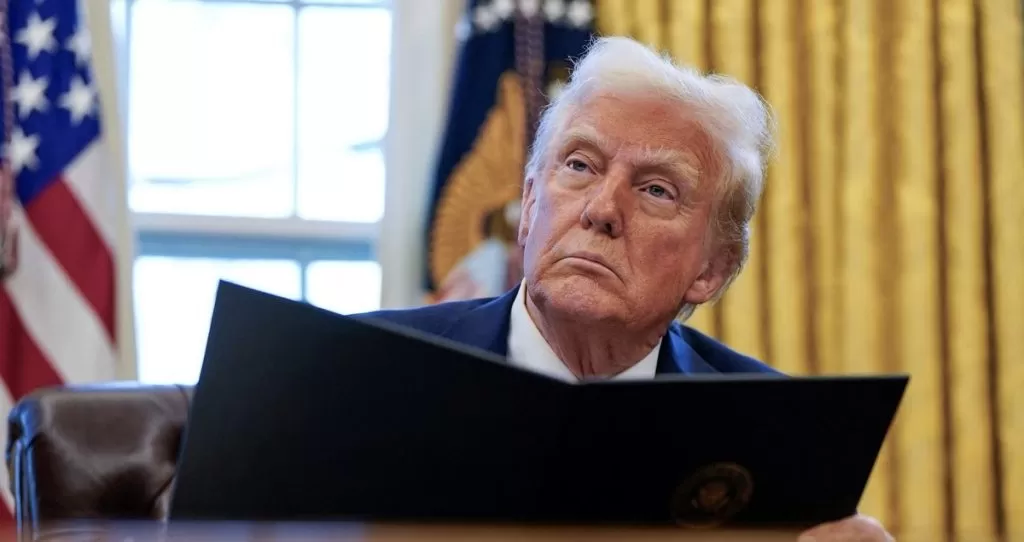Trump Demands Apple Manufacture iPhones in the U.S. or Face 25% Tariff

On May 23, 2025, President Donald Trump issued a bold ultimatum to tech giant Apple, demanding that the company relocate its iPhone manufacturing to the United States or face a steep 25% tariff on its products. The announcement, reported by major outlets such as CNN, Reuters, and Bloomberg, underscores Trump’s ongoing push to bolster domestic manufacturing and reduce reliance on foreign production. However, the feasibility of Apple complying with this demand raises complex economic, logistical, and political questions that could reshape the tech industry and consumer markets.
The Tariff Threat and Its Context
Trump’s call for Apple to bring iPhone production to American soil aligns with his broader “America First” economic agenda, which emphasizes revitalizing U.S. manufacturing and creating domestic jobs. The proposed 25% tariff would apply to iPhones and other Apple products imported into the U.S., a move that could significantly increase costs for the company and, potentially, consumers. Apple, one of the world’s most valuable companies, currently relies heavily on a global supply chain, with the majority of its iPhone assembly occurring in China through partners like Foxconn. Additional production has also shifted to India in recent years as Apple diversifies its manufacturing base amid geopolitical tensions.
The tariff threat comes at a time when U.S.-China trade relations remain strained, with tariffs and trade restrictions already impacting global markets. Trump’s latest move appears to double down on his campaign promises to incentivize or coerce companies into repatriating manufacturing operations. However, the specifics of how such a tariff would be implemented—whether it would target all Apple products or only specific devices like the iPhone—remain unclear based on available reports.
The Challenges of Domestic iPhone Production
Relocating iPhone manufacturing to the U.S. is far from straightforward. Apple’s supply chain is a sprawling global network that includes not only assembly plants but also suppliers of specialized components, such as semiconductors, displays, and rare earth materials. Posts on X highlight the enormity of the task, with some users pointing out that moving production would require rebuilding factories, retraining a workforce, and securing access to critical materials—none of which can be accomplished overnight.
Labor costs in the U.S. are significantly higher than in countries like China and India, which could drive up production expenses. Speculative discussions on X suggest that manufacturing iPhones domestically might triple their retail price or push costs as high as $5,000 per device. While these figures are unverified and likely exaggerated, they reflect a broader concern that tariffs and forced relocation could lead to higher consumer prices. Apple’s ability to absorb such costs without passing them on to customers is uncertain, given the company’s reliance on maintaining competitive pricing in a crowded smartphone market.
Moreover, the U.S. lacks the immediate infrastructure and skilled labor force needed for large-scale electronics manufacturing at the level Apple requires. Building such capacity would demand substantial investment and time, potentially spanning years. Even if Apple were to comply, the transition could disrupt its supply chain, delay product launches, and affect its global competitiveness.
Apple’s Strategic Moves and Alternatives
Apple has already taken steps to diversify its manufacturing footprint, reducing its dependence on China. Reuters reports that the company has been ramping up production in India, where it now assembles some iPhone models. This shift is partly a response to U.S.-China trade tensions and supply chain disruptions caused by events like the COVID-19 pandemic. India’s growing role as a manufacturing hub could serve as a buffer against Trump’s proposed tariffs, allowing Apple to sidestep some of the pressure to move production to the U.S.
However, fully transitioning to U.S.-based manufacturing would be a far greater challenge. Apple would need to navigate not only logistical hurdles but also potential backlash from international partners and suppliers. The company’s global supply chain is deeply interconnected, and disrupting it could have ripple effects across the tech industry.
Public and Industry Reactions
The reaction to Trump’s tariff threat has been mixed, with polarized sentiments emerging on platforms like X. Some users view the policy as a bold step toward revitalizing American manufacturing and reducing reliance on foreign labor. They argue that it could create jobs and strengthen the U.S. economy in the long term. Others, however, warn of unintended consequences, such as skyrocketing iPhone prices that could burden consumers and harm Apple’s market share. Critics on X have also speculated that the tariff might be a political maneuver aimed at appealing to Trump’s base or benefiting wealthy donors, though these claims lack substantiation and remain speculative.
Industry analysts are likely to scrutinize the tariff’s potential impact on Apple’s stock price, profit margins, and competitive position. The company’s ability to negotiate with the Trump administration or find alternative solutions—such as increasing automation to offset U.S. labor costs—will be critical in determining the outcome.
Broader Implications
Trump’s demand reflects a broader trend of economic nationalism that could reshape global trade dynamics. If implemented, the 25% tariff could set a precedent for other U.S. companies with overseas manufacturing, prompting a reevaluation of supply chains across industries. However, it also risks escalating trade tensions, particularly with China, which could retaliate with its own tariffs or restrictions.
For consumers, the immediate concern is the potential for higher prices. iPhones are already premium-priced devices, and a significant cost increase could push some buyers toward competitors like Samsung or Google, which also rely on global supply chains but might face similar pressures under Trump’s policies.
Conclusion
President Trump’s demand that Apple manufacture iPhones in the U.S. or face a 25% tariff is a high-stakes gamble with far-reaching implications. While the policy aligns with his goal of boosting domestic manufacturing, it poses significant challenges for Apple, from logistical hurdles to potential cost increases. The company’s response—whether it doubles down on diversification, negotiates exemptions, or explores U.S. production—will shape its future and influence the broader tech industry. For now, the threat remains just that—a threat—but its resolution could redefine the intersection of technology, trade, and politics in the years to come.






